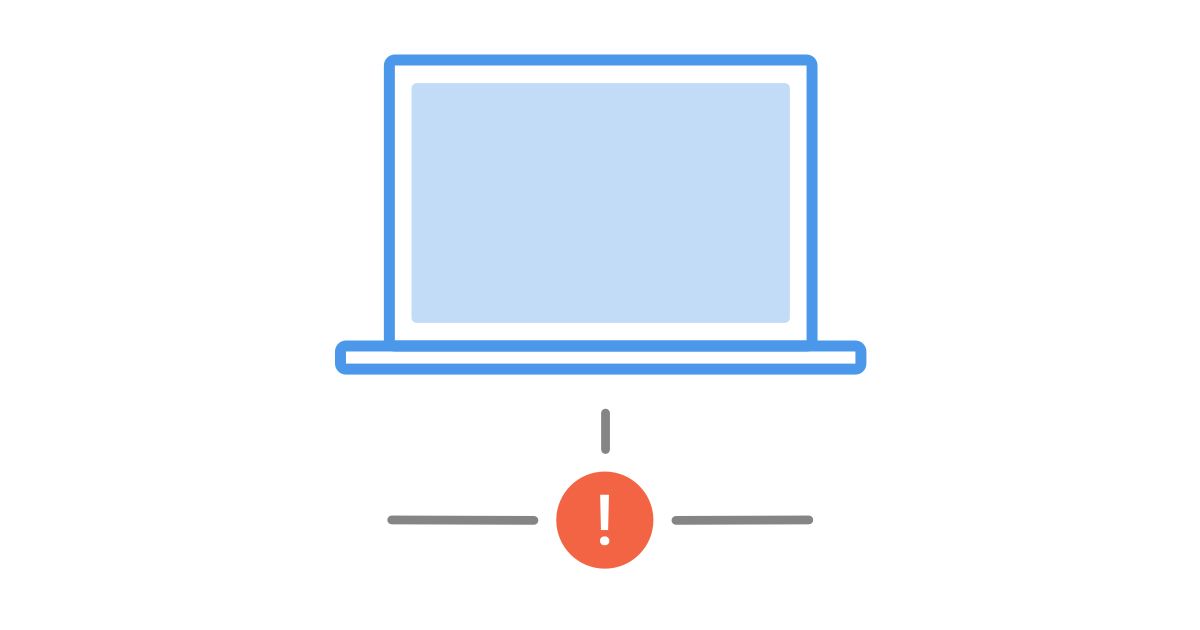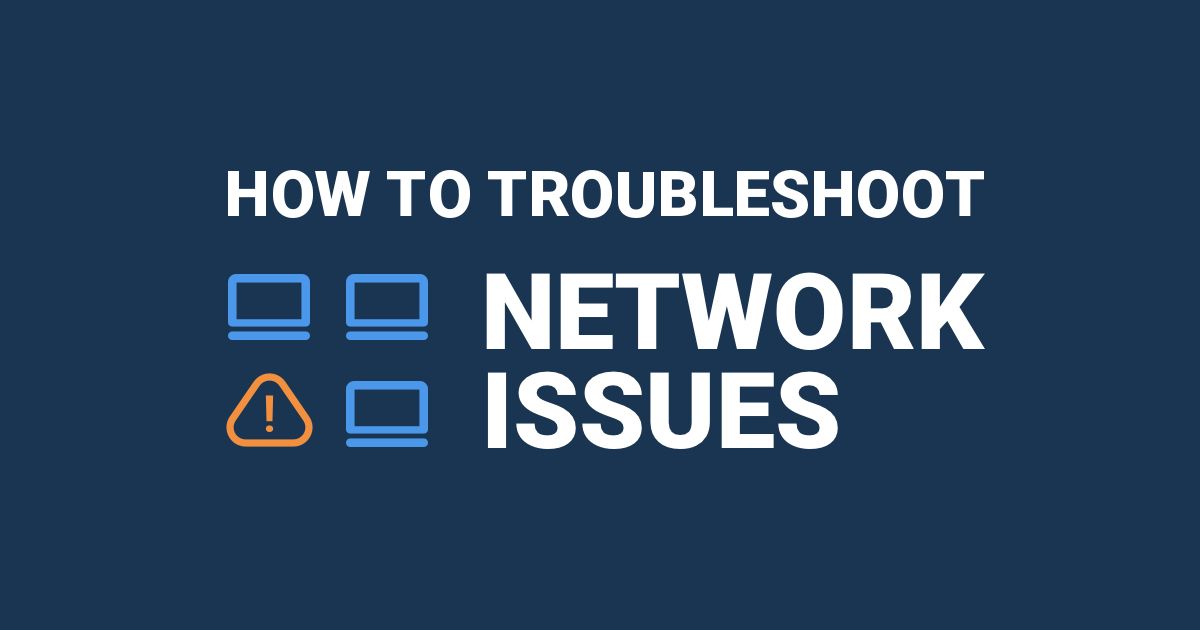Table of Contents
Table of Contents
Welcome to the jungle! No, we're not talking about the wild, untamed rainforest filled with exotic animals and hidden treasures. We're talking about the jungle of network congestion, where packets of data roam wild and free, causing chaos and confusion for anyone trying to navigate their way through. But fear not, fellow adventurers, for we have the ultimate guide to help you conquer the congestion jungle and emerge victorious on the other side.
In this blog post, we'll show you how to become a master of network congestion monitoring, equipped with all the tools and knowledge you need to detect, diagnose, and solve congestion issues like a pro. So strap on your boots, grab your machete, and let's get ready to conquer the congestion jungle!
Network Congestion occurs when your network cannot adequately handle the traffic flowing through it. This can be caused by faulty or over-used devices or even bad network configurations.
Network congestion can occur in your network (LAN congestion), or even outside of your network in your network devices, or your ISP network or Internet.
While network congestion is usually temporary, it can lead to network problems that can affect drastically performance, such as high levels of jitter, packet loss, and a decrease in throughput.
Network congestion can be compared to a dense jungle where there are too many animals trying to move through a limited space. Just like how animals in a jungle need to navigate through the foliage to reach their destination, data packets in a network need to traverse through routers, switches, and other network devices to reach their destination.
However, when there are too many packets trying to move through the network at once, it can lead to congestion, just like how too many animals moving through a jungle can cause a traffic jam.
Are you ready to monitor and fix network congestion? Don't let your network run wild try Obkio's network monitoring solution today to tame network congestion. Sign up for a free trial now and get control of your network performance!


- 14-day free trial of all premium features
- Deploy in just 10 minutes
- Monitor performance in all key network locations
- Measure real-time network metrics
- Identify and troubleshoot live network problems
Furthermore, just as how a jungle can be home to predators and prey, a network can be home to malicious actors looking to cause congestion and disrupt the flow of data. Network administrators must be vigilant and protect the network from such threats, just like how animals must protect themselves from predators in the jungle.
Network congestion monitoring is important for several reasons:
- Performance optimization: Network congestion can significantly slow down data transmission, leading to poor performance. By monitoring network congestion, network administrators can identify and resolve congestion issues before they impact network performance, thereby optimizing the network and ensuring data flows smoothly.
- Improved user experience: Network congestion can negatively impact the user experience, leading to slower response times and degraded application performance. By monitoring network congestion, administrators can ensure a better user experience and prevent frustration or dissatisfaction among users.
- Preventing network failures: Network congestion, if left unchecked, can lead to network failures or crashes. By monitoring network congestion, administrators can identify potential congestion issues and take proactive measures to prevent network failures, which can save time and money in the long run.
- Enhancing network security: In some cases, network congestion can be caused by malicious activity, such as a denial-of-service attack. By monitoring network congestion, administrators can identify potential security threats and take measures to mitigate them, thereby enhancing network security.
Overall, network congestion monitoring is an important aspect of network management. It allows administrators to proactively identify and resolve congestion issues, optimize network performance, ensure a better user experience, prevent network failures, and enhance network security.
There are several techniques for monitoring network congestion, from measuring packet loss and round-trip time to analyzing network traffic patterns. By keeping an eye on network congestion, you can help ensure that your Internet speeds stay lightning fast and your connections stay strong.
- Packet Loss: This technique involves monitoring the percentage of packets that are lost during transmission. If the packet loss rate is high, it can be an indication of network congestion.
- Round Trip Time (RTT): This technique involves measuring the time it takes for a packet to travel from the source to the destination and back again. If the RTT is high, it can be an indication of network congestion.
- Bandwidth Utilization: This technique involves monitoring the amount of bandwidth that is being used at any given time. If the bandwidth utilization is consistently high, it can be an indication of network congestion.
- Queue Length: This technique involves monitoring the number of packets waiting in a network queue. If the queue length is consistently high, it can be an indication of network congestion.
- Active Queue Management (AQM): This technique involves actively managing network congestion by monitoring the queue length and dropping packets before the queue becomes too full. AQM can help prevent network congestion from occurring in the first place.
- Network Traffic Analysis: This technique involves analyzing the traffic patterns on a network to identify areas of congestion. By understanding the traffic patterns, network administrators can take steps to reduce congestion and optimize network performance.
Is your network a jungle of wires and devices, with traffic coming and going at all hours of the day and night? It can be tough to keep track of everything, let alone monitor for network congestion. But fear not, with the ultimate network congestion monitoring setup, you can tame the jungle and keep your network running smoothly.
With a combination of cutting-edge tools and techniques, you'll be able to measure packet loss, track round-trip time, monitor bandwidth utilization, analyze network traffic patterns, and much more. So strap in, grab your machete, and get ready to tame that network jungle like a pro!
You may feel the signs of network congestion in your applications and Internet, but how do you know what’s causing it? And how can you fix network congestion? Just as a guide can help adventurers navigate safely through the dense jungle, a network monitoring tool can help administrators to navigate the congested jungle of network traffic.
Obkio Network Performance Monitoring tool is your secret weapon to monitor end-to-end network performance to identify network congestion, pinpoint the cause, and take steps towards fixing it!

- End-to-End Visibility: Obkio continuously monitors end-to-end network performance so you can monitor performance from your local network (LAN, VPN), as well as third-party networks (WAN performance, ISP, and Internet Peering).
- Real-time monitoring: Obkio uses synthetic traffic to provide real-time information and quickly identify congestion issues.
- Automated alerts: Obkio sends automated network monitoring alerts when congestion thresholds are exceeded, allowing administrators to take immediate action to resolve the issue before it impacts network performance.
- Historical analysis: Obkio collects historical data about network traffic and congestion, allowing administrators to analyze trends and identify patterns in network congestion. This can help with network capacity planning and optimizing network performance.
- Drill-down capabilities: Obkio provides detailed information about network metrics, allowing administrators to drill down into specific devices, applications, and network monitoring protocols to identify the root cause of congestion and collect data to troubleshoot.

You can oftentimes feel the symptoms of network congestion on your application and network performance. With a proactively monitoring tool like Obkio, you'll be notified of network congestion even before your users start to experience it.
But, it's still important to understand some of the most common symptoms when taking on network congestion monitoring:
- Slow Internet Speeds: Slow Internet speeds are the most obvious symptom of network congestion. This can manifest as slow webpage loading times, buffering videos, or delays in downloading files.
- Packet Loss: When a network is congested, packets of data may be lost or dropped, causing packet loss and leading to errors in data transfer and even application crashes.
- High Latency: Network congestion can cause high latency or lag, which can be especially noticeable in online gaming or video conferencing.
- Connection Timeouts: If a network is congested, connections may time out or fail to establish, preventing users from accessing the network or particular applications.
- Poor voice or video quality: Congestion can cause poor quality in voice or video calls, with images appearing pixelated or choppy, and sound being distorted or dropping out.
- Unresponsive Applications: When a network is congested, applications may become unresponsive, leading to frustration and lost productivity. This is especially true with real-time apps like Zoom
In the congested jungle of network traffic, overused network equipment can be like an impassable thicket that slows down data packets and causes congestion. To clear the path, you need to look there first.
Thankfully, Obkio's Network Device Monitoring feature can be like a guide with a machete, allowing you to monitor your own network equipment and measure the quantity of traffic going through your devices. This way, you can quickly identify which devices are being overused and causing congestion.
If you're approaching the limit of the amount of traffic your devices or Internet connection can handle, you're like a group of adventurers who have stumbled upon a blocked path in the jungle. This is a clear sign that you're about to experience network congestion, and it's time to take action before you get stuck in a traffic jam.
With Obkio, network congestion monitoring starts in network devices such as:
- Routers and switches: Routers and switches are responsible for forwarding data packets between different devices on the network. Monitoring these devices can give you insight into how much traffic is being transmitted and help you identify potential bottlenecks or congestion points.
- Firewalls: Firewalls are designed to control access to the network and protect it from external threats. Monitoring firewall traffic can help you identify anomalies in network traffic that may indicate congestion.
- Servers and storage devices: These devices are responsible for storing and processing data on the network. Monitoring their performance can help you identify any performance issues that may be contributing to network congestion.
- Endpoints: Endpoints refer to the devices that connect to the network, such as desktop computers, laptops, and mobile devices. Monitoring endpoint performance can help you identify any issues that may be causing congestion, such as bandwidth-hungry applications or misconfigured devices.

By using Obkio's Network Device Monitoring feature to monitor your network equipment and proactively identify congestion issues, you can be like an experienced guide who can navigate through the dense jungle of network traffic with ease. So, grab your machete and get ready to clear the path for data packets to flow smoothly!
Navigating through the congested jungle of network traffic can be challenging, especially when your network devices or Internet connection are lacking the resources needed to process the flow of traffic. This can be like a group of adventurers running low on supplies and struggling to make progress through the thick jungle.
In the screenshot below, we can see an example of what can happen when a network device lacks the necessary resources to manage the throughput.
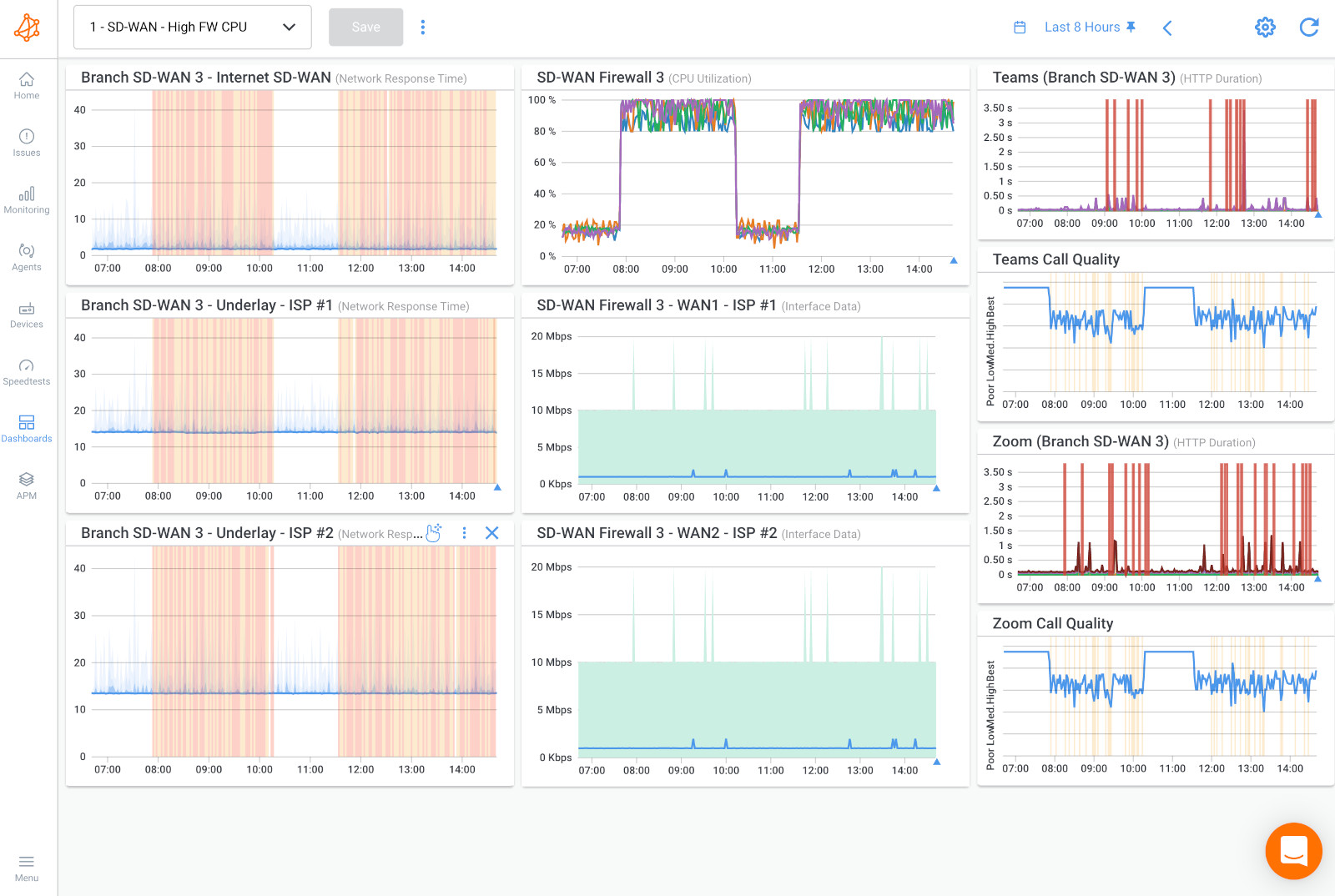
- High CPU usage on SD-WAN Devices, as shown in the second column, can be like a warning sign that your guide is running low on energy and may not be able to keep up with the pace of the journey.
- When a network device cannot process data packets properly, it will end up dropping them and causing packet loss, like a guide who drops valuable supplies due to fatigue. This can lead to network congestion, just like how running low on supplies can slow down progress through the jungle.
To prevent this, it's essential to monitor your network devices and Internet connection using tools like Obkio's Network Device Monitoring feature, which can act like a compass and keep you on track. By identifying high CPU usage and other resource-related issues proactively, you can be like a savvy adventurer who is always prepared with the necessary supplies to navigate the jungle of network traffic with ease.
In all these circumstances, you can set up SNMP monitoring to poll interfaces and graphs for bandwidth usage (inbound/outbound traffic) and identify short bursts of traffi (packet bursts) or CPU utilization that affect network performance.


Navigating through the congested jungle of network traffic can be difficult, especially when you're not always using your own equipment. Some businesses may be relying on their ISP's or MSP's network equipment, which can be like following a guide through an unfamiliar part of the jungle.
In addition, network congestion may not be happening within your own network, but rather in your ISP's network, on the local loop of its connection, or even on the Internet. This can be like encountering obstacles on the path that are outside of your control.
That’s why Obkio detects network congestion by monitoring other core network metrics! Like a skilled navigator who can read the stars to find their way through the jungle, you can easily identify network congestion by measuring:
- Bandwidth utilization: Bandwidth utilization is the amount of bandwidth that is being used at any given time. This metric is important because it can help you understand how much traffic is flowing across your network. If the bandwidth utilization is consistently high, it can indicate that your network is congested and struggling to keep up with the demand.
- Packet loss: Packet loss occurs when one or more packets fail to reach their destination. This can happen due to a variety of reasons, including network congestion. Measuring the percentage of packet loss can give you an indication of how congested your network is. If the packet loss rate is high, it can indicate that your network is struggling to handle the amount of traffic it's receiving.
- Round-trip time (RTT): RTT is the time it takes for a packet to travel from the source to the destination and back again. Measuring RTT can give you an indication of how long it takes for data to be transmitted across your network. If the RTT is high, it can indicate that there is congestion on the network or that the distance between the source and destination is causing delays.
- Network jitter: Jitter is the variation in the time it takes for packets to travel from the source to the destination. High jitter can lead to inconsistent network performance and can make it difficult to predict how long it will take for packets to reach their destination.
- Network Throughput: Network throughput is the amount of data that is transmitted over a network during a certain period of time. If the network throughput is consistently low, it can indicate that your network is congested and struggling to keep up with demand. By measuring network throughput, you can get an idea of how much data your network can handle and whether it's meeting the needs of your users.
- Queue Length: A network queue is a buffer where packets are stored before being transmitted. If the queue length is consistently high, it can indicate that your network is congested and that packets are waiting too long to be transmitted. High queue lengths can lead to increased latency and packet loss.
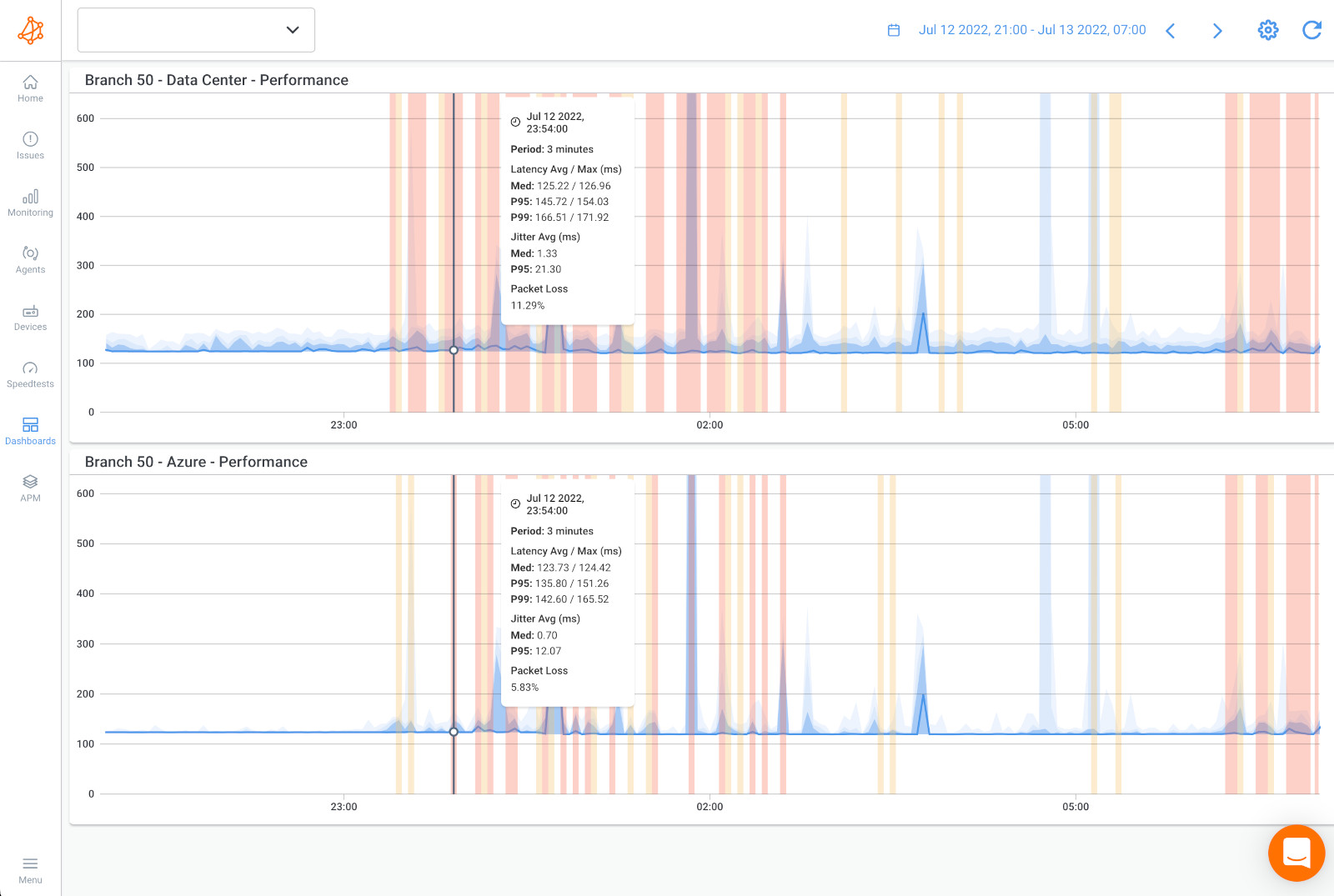

By monitoring these core network metrics, Obkio can detect signs of congestion and proactively take action to resolve the issue, even if you don't have direct access to the network equipment's data. It's like having a compass and map to guide you through the jungle of network traffic, even in unfamiliar territory.
In the congested jungle of network traffic, dropped packets (also known as packet loss) and increased latency and jitter are common issues. It's like when there's a traffic jam in the jungle, and all the cars start to accumulate, leading to a huge backlog of vehicles.
When network congestion occurs, data packets can accumulate in a similar way, leading to a backlog or "buffer" of data. As the buffer fills up, it takes more time to empty and refill, which increases latency and jitter. If the buffer is small, the latency won't increase too much, but more packets will be dropped. Think of it like a river that can handle a certain amount of water flow, and once it exceeds that limit, the excess water causes flooding.
The size of the buffer depends on the network equipment and can either be adjustable or fixed in the hardware. By monitoring network congestion and adjusting the buffer size accordingly, you can prevent issues like dropped packets and minimize the impact on latency and jitter. It's like building a bridge over the river to increase its capacity and prevent flooding during heavy rains.
Here’s what network congestion monitoring looks like with Obkio:
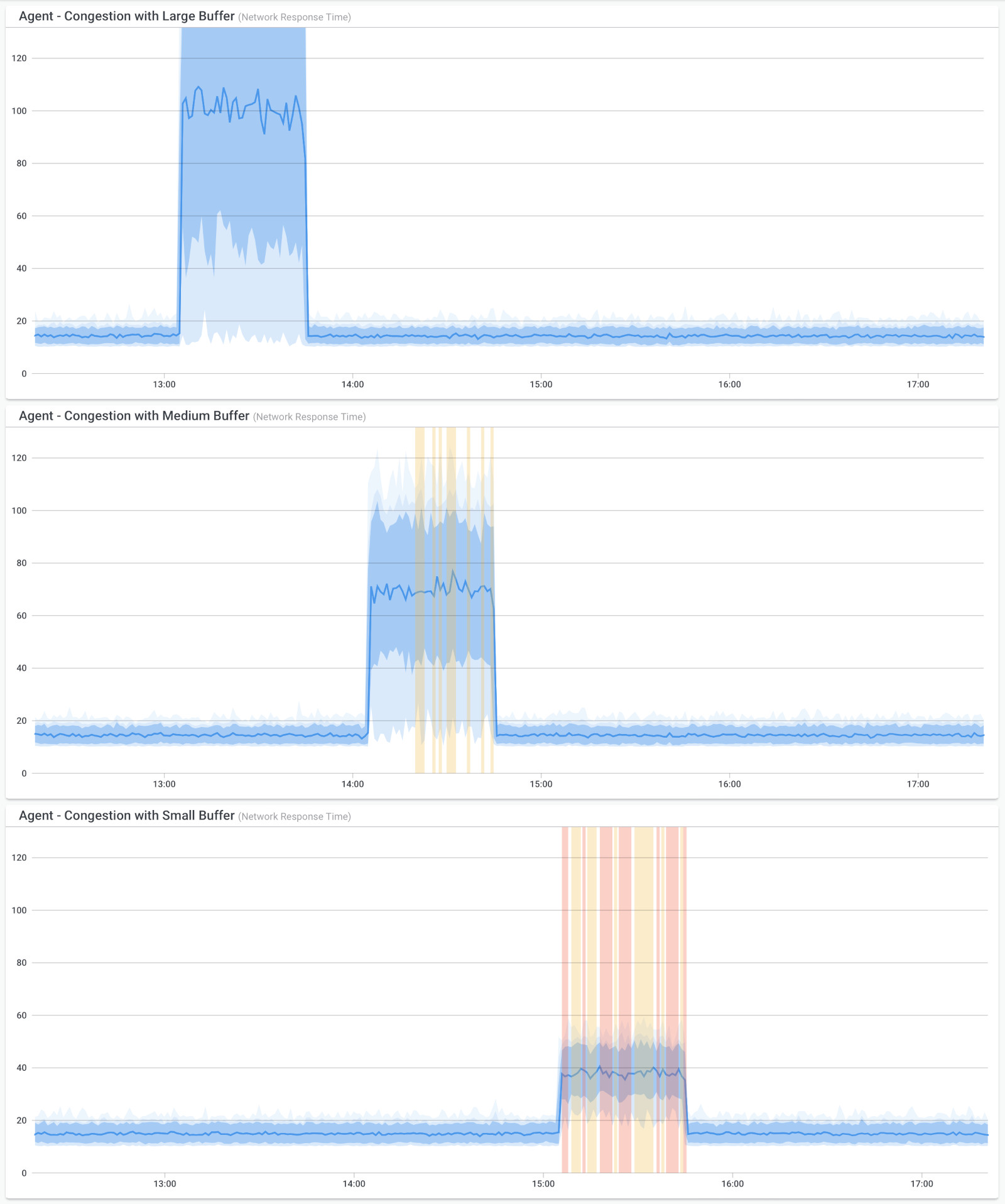
- In the first graph, you can see there is network congestion and the buffer is very large. Therefore there is little packet loss but a lot of latency and jitter.
- In the second graph, there is network congestion with a medium buffer, so the packet loss, latency and jitter are all moderate.
- In the third graph, there is network congestion with a small buffer, so the latency and jitter don’t increase too much but there is more packet loss.
Just like how the jungle can get congested with animals for a variety of reasons, network congestion can also happen for various reasons. As we mentioned earlier, Obkio monitors your entire network infrastructure to detect network congestion based on some of its most common causes, such as a lack of resources.
- High traffic volume: When there are too many devices using the same network at once, it can overload the network (network overload) and slow down Internet speeds.
- Outdated hardware: Older routers and switches may not be able to handle the demands of modern Internet usage, leading to congestion.
- Inadequate bandwidth: If the available bandwidth is too low, it can't support the amount of traffic trying to use the network, causing congestion.
- Network configuration issues: Improperly configured networks can lead to congestion, as traffic isn't routed efficiently or evenly.
- Network attacks: Denial of Service (DoS) attacks, which flood a network with traffic, can cause congestion and even bring down the network.
- Unnecessary traffic: Non-essential traffic, such as updates or backups, can clog up the network and lead to congestion.
By keeping a watchful eye on your network and identifying the root causes of congestion, you can take proactive steps to prevent issues before they impact network performance or network availability. It's like looking in the jungle to spot potential congestion points and taking steps to clear the way and keep traffic flowing smoothly.


If you've explored the depths of the jungle that is your network and identified network congestion caused by a lack of resources, then it's time to take action. Here are some suggestions to help you clear the path and prevent congestion from impacting your network performance and availability.
- Analyze Traffic Logs: Look at your firewall logs and the traffic going through your devices to see if the traffic is legitimate or not. Illegitimate traffic might be a security breach (data exfiltration), or mass data backup during business hours.
- Increase Bandwidth Availability: Increase your Internet connection bandwidth with your ISP if you’re just running out of bandwidth. This also involves upgrading your network hardware, such as routers and switches, or increasing your internet service provider's bandwidth.
- Decrease Traffic Usage: If your network devices can't handle the traffic going through them, you can also simply decrease your usage. This can mean allocating times during the day when you minimize traffic or using network security measures, such as firewalls and antivirus software to remove malware.
- Manage Priorities: Use QoS (Quality of Service) to prioritize some traffic on the network in order to reduce high bandwidth or CPU usage causing congestion. Learn more about how Obkio performs QoS Monitoring with DSCP Features. Load Balancing: Load balancing involves distributing network traffic across multiple servers or connections to optimize performance and reduce congestion. This can be achieved using specialized load-balancing hardware or software.
Optimize VoIP performance with QoS implementation. Explore best practices for QoS for VoIP, overcome challenges, and elevate clarity with Obkio's NPM tool.
Learn more

Just as the jungle is constantly evolving and changing, so too is your network. That's why continuous network congestion monitoring using Obkio’s NPM tool is essential to keep your network running smoothly.
Monitoring your network for congestion is like regularly scouting the jungle for potential obstacles that could impede the flow of traffic. By detecting congestion issues early on and taking proactive steps to resolve them, you can prevent minor issues from becoming major problems that could impact the performance and availability of your network.
Continuous network congestion monitoring also allows you to stay ahead of any changes in your network environment, whether it be an increase in traffic or a new application being added to the mix. It's like having a guide who knows the jungle like the back of their hand and can anticipate changes before they occur.
By implementing continuous network congestion monitoring with Obkio, you can ensure that your network is always prepared to handle whatever challenges come its way, just like a skilled jungle explorer always has the right tools and knowledge to navigate the ever-changing terrain.
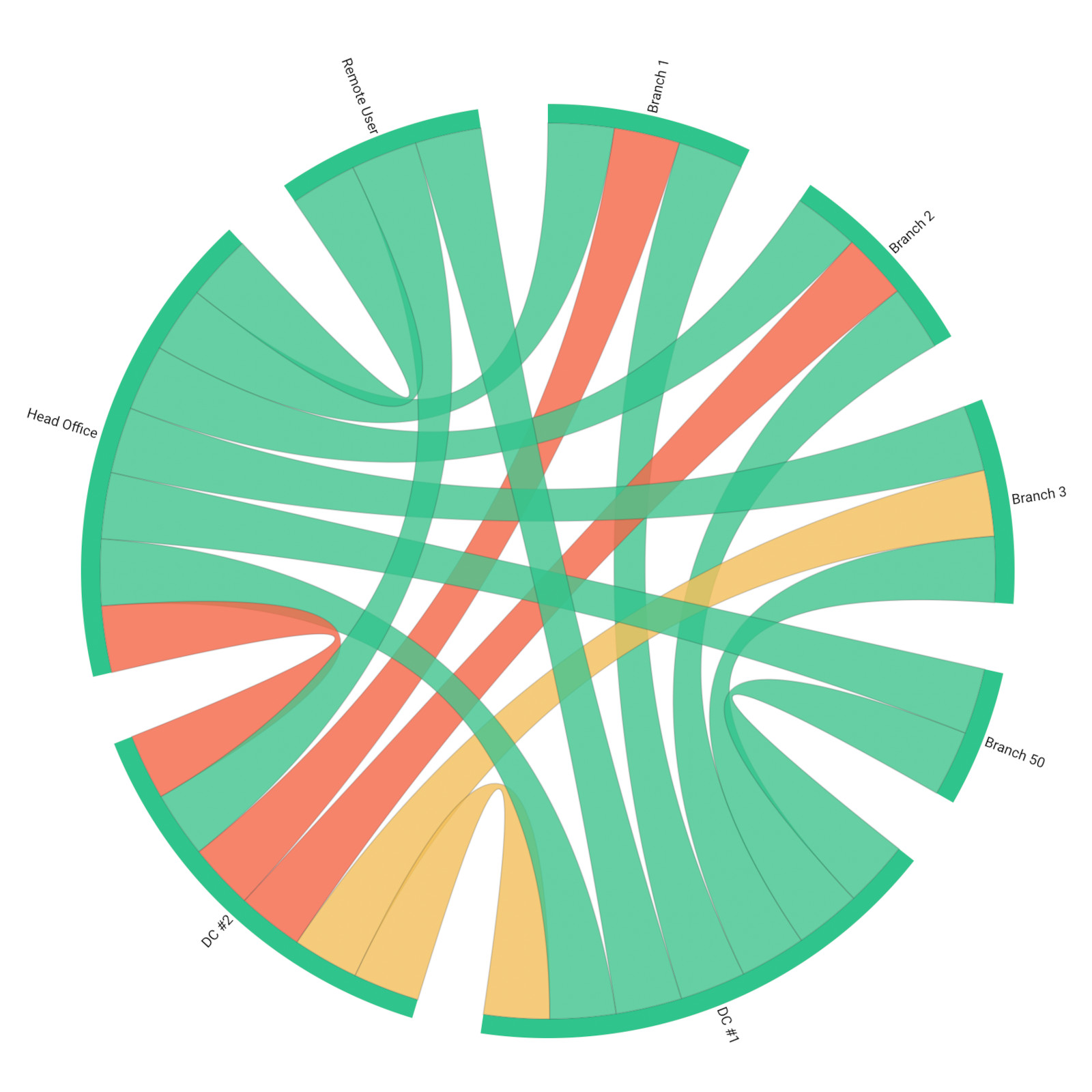

Navigating the jungle of network congestion can be a daunting task, but with the right tools and strategies in place, you can conquer it like a pro. By continuously monitoring your network for congestion, you can proactively identify and resolve issues before they impact your network's performance and availability.
Obkio's network congestion monitoring feature can be your trusted guide in this journey. With its ability to monitor your network infrastructure for congestion based on a variety of factors, such as lack of resources or excessive packet loss, you can have peace of mind knowing that your network is always performing at its best.
Don't get jammed up by network congestion.
And keep your network running smoothly like a well-oiled jungle machine!



























 Obkio Blog
Obkio Blog





